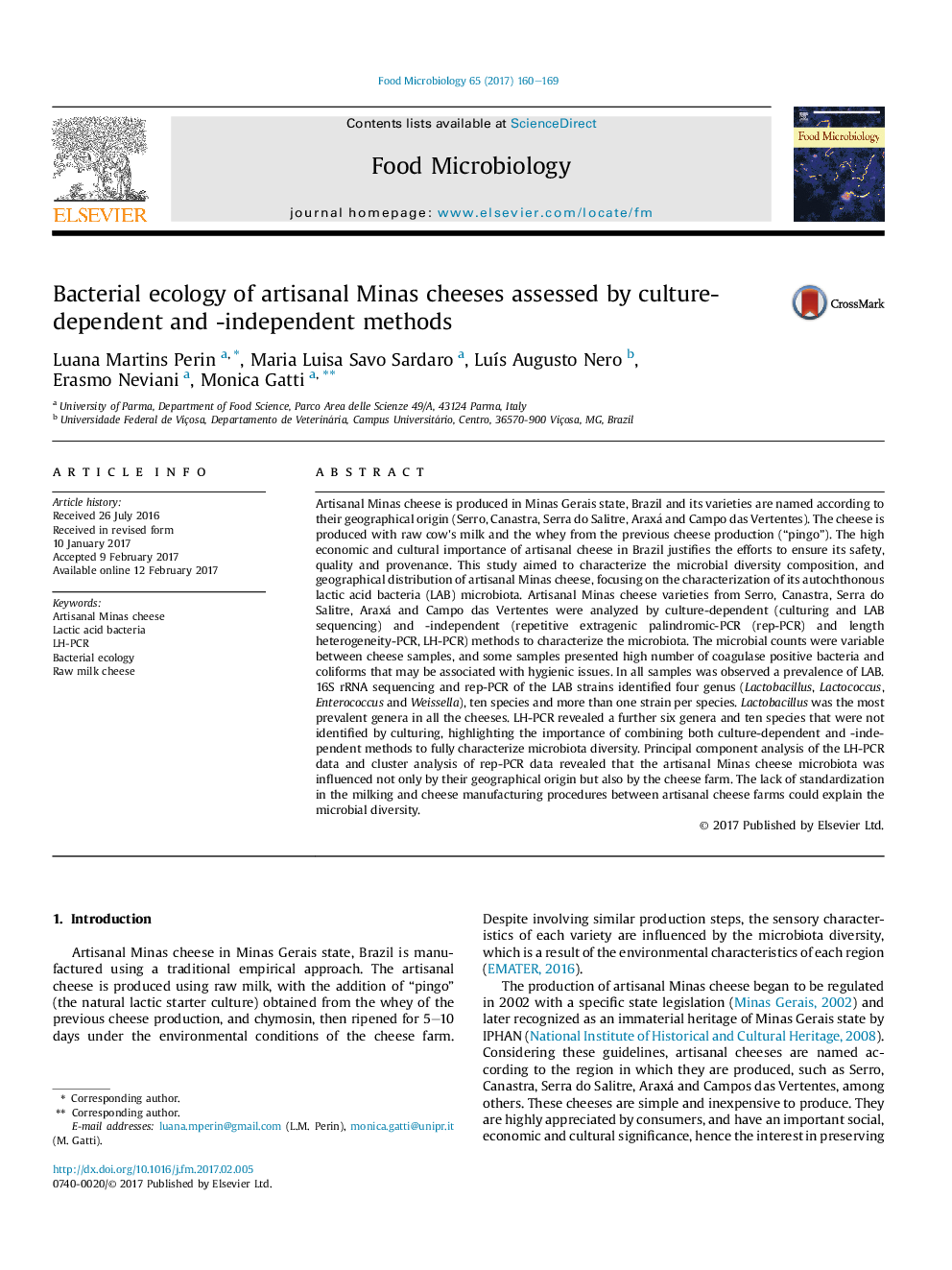| کد مقاله | کد نشریه | سال انتشار | مقاله انگلیسی | نسخه تمام متن |
|---|---|---|---|---|
| 5740140 | 1616236 | 2017 | 10 صفحه PDF | دانلود رایگان |
- First report of using rep-PCR and LH-PCR to assess Minas cheese microbiota.
- Microbial diversity depends not only by cheese origin but also by producing farm.
- LAB, specially Lactobacillus, was the most predominant group in all varieties.
Artisanal Minas cheese is produced in Minas Gerais state, Brazil and its varieties are named according to their geographical origin (Serro, Canastra, Serra do Salitre, Araxá and Campo das Vertentes). The cheese is produced with raw cow's milk and the whey from the previous cheese production (“pingo”). The high economic and cultural importance of artisanal cheese in Brazil justifies the efforts to ensure its safety, quality and provenance. This study aimed to characterize the microbial diversity composition, and geographical distribution of artisanal Minas cheese, focusing on the characterization of its autochthonous lactic acid bacteria (LAB) microbiota. Artisanal Minas cheese varieties from Serro, Canastra, Serra do Salitre, Araxá and Campo das Vertentes were analyzed by culture-dependent (culturing and LAB sequencing) and -independent (repetitive extragenic palindromic-PCR (rep-PCR) and length heterogeneity-PCR, LH-PCR) methods to characterize the microbiota. The microbial counts were variable between cheese samples, and some samples presented high number of coagulase positive bacteria and coliforms that may be associated with hygienic issues. In all samples was observed a prevalence of LAB. 16S rRNA sequencing and rep-PCR of the LAB strains identified four genus (Lactobacillus, Lactococcus, Enterococcus and Weissella), ten species and more than one strain per species. Lactobacillus was the most prevalent genera in all the cheeses. LH-PCR revealed a further six genera and ten species that were not identified by culturing, highlighting the importance of combining both culture-dependent and -independent methods to fully characterize microbiota diversity. Principal component analysis of the LH-PCR data and cluster analysis of rep-PCR data revealed that the artisanal Minas cheese microbiota was influenced not only by their geographical origin but also by the cheese farm. The lack of standardization in the milking and cheese manufacturing procedures between artisanal cheese farms could explain the microbial diversity.
Journal: Food Microbiology - Volume 65, August 2017, Pages 160-169
